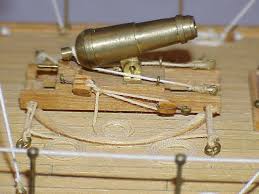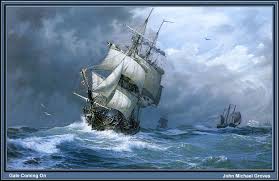Several "open sources" reported a dangerous and historic discovery made in Central Park the week before last.
New York City Parks workers found a live cannonball loaded in a cannon. The artillery piece, dating back to the Revolutionary War, was one of two cannons stored at the park’s Ramble shed near the 79th Street transverse, a road that crosses the park from east to west. Preservation workers from the Central Park Conservancy called the police after opening the capped cannon for cleaning. The police discovered over 800 grams of black powder, along with cotton wadding and a cannonball. More importantly, the powder was still capable of firing!

Revolutionary War cannon found in Central Park
The cannon, donated to the park around the time of the Civil War, was on public display for over 125 years until 1996, when the Conservancy decided to bring it inside to protect it from vandalism. So, a loaded cannon sat amidst joggers, school kids, picnickers, and lovers (not to mention assorted hookers, pimps, junkies, and muggers). It’s amazing that loaded ordnance could have gone unnoticed for so long. However, the gun posed little real threat, as it was already over 90 years old and is believed to have come from a sunken British vessel in the East River. Additionally, it was capped with concrete.

The Patriot Spy recounts the British invasion of Long Island (modern-day Brooklyn) and then the Island of New York (modern-day Manhattan)... The gun appears to be a small-caliber (6 or 12-pound) carronade. During the Revolutionary War, guns like these would have mostly been used to arm British merchant ships, not frigates as the New York papers speculate.
Carronades (named after the British Carron ironworks that developed them) were short-barreled guns used on merchant ships for defense. More economical and easier to operate than high-velocity "long guns," the carronade's lower muzzle velocity gave it a better "smashing" ability. The carronade's shot could devastate its target, tearing the ship's gunwale and masts into much larger chunks and splinters that were as deadly to the enemy as the munition itself. Additionally, because they required less run-out space, they needed a smaller crew, and more carronades could be mounted in the same space as long guns. They could also be brought back into battery for the next shot more quickly than traditional guns, giving carronades a faster rate of fire.
 |
| Carronades had a higher trajectory than long guns |
Why merchant ships? The carronade sat high in its gun carriage, making it more difficult to smash the hull at the waterline. However, the deck line and the masts were easy targets. Merchant vessels typically only needed to smash masts, yardarms, and rigging to reduce the sail power of their pursuer—usually an American privateer—and then make their escape. It wasn't until 1791 that the Royal Navy started mounting these devastating little weapons on the men o' war. And not just on frigates: schooners, brigs, and even ships of the line (large sailing battleships with 60 or more guns). The concentrated close-range fire of the carronade proved deadly to French, Spanish—and sometimes American—ships during the numerous naval battles and duels that took place from 1792 until 1814.
 |
| Merchant vessel fleeing privateers |
However, during the time of Yankee Doodle Spies, the carronade was viewed as a defensive weapon suitable for merchant ships. One can wonder whether any of the American privateers mounted these guns. They probably did once they captured a British merchant prize. The importance of merchant shipping and privateers during the Yankee Doodle Spies era is often overlooked in popular histories, but I will discuss in a future blog how vital, even decisive, that aspect of the War for Independence truly was.
 |
| Heading east from Mc Gowans Pass - today |
With this recent discovery, Central Park once again links itself to the War for Independence and the Yankee Doodle Spies. Not far from where the mysterious gun was found near McGowan's Pass—a crucial approach to the Heights of Harlem that played a significant role during the British invasion of Manhattan. And a key setting in...The Patriot Spy.


That is pretty fascinating, Scott! A lot of people are surprised to hear that several farmers are still killed each year in France when they plow over ordnance left over from World War I, and that is amazing enough -- going back almost a century-and-a-half earlier than that is almost mind boggling.
ReplyDeleteAm I correct in remembering that even during the War of 1812 the American naval forces ended up using carronades during the Battle of Lake Erie? I need to verify this one way or another ...
Mike,
ReplyDeleteBy then carronades were in widespread use on both sides. The carronade was a critical weapon in the battle of Lake Erie. here is a link to a short living history demo on the subject made at Cleveland Fleet Week last summer. Otherwise simply Google "Carronades at battle of lake Erie" and you'll get lots of hits with cool stuff!
https://www.google.com/url?sa=t&rct=j&q=&esrc=s&source=web&cd=1&cad=rja&ved=0CDQQtwIwAA&url=http%3A%2F%2Fwww.youtube.com%2Fwatch%3Fv%3DfItwwWN7it8&ei=MhD8UMSIK5Sk8ATX4YGQAg&usg=AFQjCNFL8ApCPt-C-0yk80E026TeNb6-jw&sig2=mCpbw16aYXi75h1k1_9HYg&bvm=bv.41248874,d.eWU